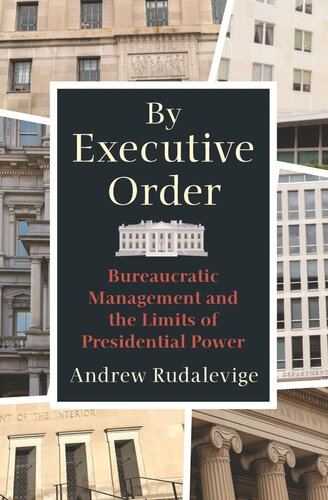

Most ebook files are in PDF format, so you can easily read them using various software such as Foxit Reader or directly on the Google Chrome browser.
Some ebook files are released by publishers in other formats such as .awz, .mobi, .epub, .fb2, etc. You may need to install specific software to read these formats on mobile/PC, such as Calibre.
Please read the tutorial at this link: https://ebookbell.com/faq
We offer FREE conversion to the popular formats you request; however, this may take some time. Therefore, right after payment, please email us, and we will try to provide the service as quickly as possible.
For some exceptional file formats or broken links (if any), please refrain from opening any disputes. Instead, email us first, and we will try to assist within a maximum of 6 hours.
EbookBell Team

0.0
0 reviewsHow the executive branch—not the president alone—formulates executive orders, and how this process constrains the chief executive's ability to act unilaterally
The president of the United States is commonly thought to wield extraordinary personal power through the issuance of executive orders. In fact, the vast majority of such orders are proposed by federal agencies and shaped by negotiations that span the executive branch. By Executive Order provides the first comprehensive look at how presidential directives are written—and by whom.
In this eye-opening book, Andrew Rudalevige examines more than five hundred executive orders from the 1930s to today—as well as more than two hundred others negotiated but never issued—shedding vital new light on the multilateral process of drafting supposedly unilateral directives. He draws on a wealth of archival evidence from the Office of Management and Budget and presidential libraries as well as original interviews to show how the crafting of orders requires widespread consultation and compromise with a formidable bureaucracy. Rudalevige explains the key role of management in the presidential skill set, detailing how bureaucratic resistance can stall and even prevent actions the chief executive desires, and how presidents must bargain with the bureaucracy even when they seek to act unilaterally.
Challenging popular conceptions about the scope of presidential power, By Executive Order reveals how the executive branch holds the power to both enact and constrain the president’s will.